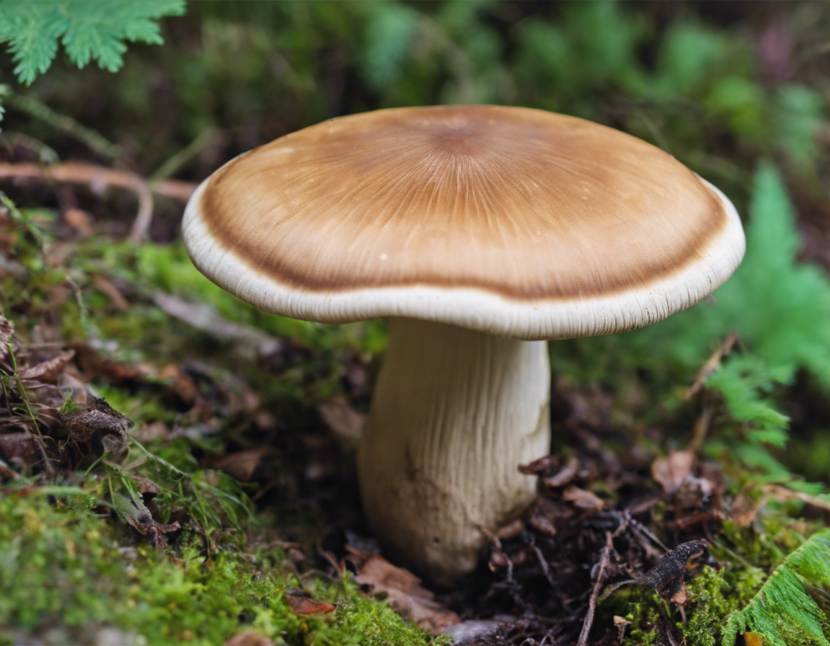Introduction
If you’ve ever wandered through a forest or meadow in the right conditions, you might have come across a peculiar sight – a flying saucer mushroom. These distinctive, saucer-shaped fungi with their unique appearance and mysterious origin have captivated the curiosity of nature enthusiasts and mycologists alike. In this comprehensive guide, we will delve deep into the world of flying saucer mushrooms, exploring their characteristics, habitat, significance, and everything in between.
What are Flying Saucer Mushrooms?
The flying saucer mushroom, also known as Helvella crispa, is a species of fungus that belongs to the Helvellaceae family. Its most striking feature is the cap, which is shaped like an upside-down saucer or a cup, hence its common name. The cap is usually brown or gray in color and can grow up to 10 cm in diameter. The stem is light in color and often twisted or lobed.
Habitat and Distribution
Flying saucer mushrooms are typically found in woodlands, meadows, and open grassy areas. They prefer moist soil and are commonly seen during the spring and autumn months. These mushrooms are widespread throughout North America and Europe but can also be found in other parts of the world with suitable environmental conditions.
Life Cycle
Like all fungi, flying saucer mushrooms have a complex life cycle that involves both sexual and asexual reproduction. The spores, which are produced in the tiny structures on the underside of the cap, are released into the environment and germinate under favorable conditions to form new individuals.
Ecological Significance
Flying saucer mushrooms play a vital role in the ecosystem as decomposers. They break down dead organic matter, such as leaves and wood, into simpler substances, which are then recycled back into the soil. This process helps to enrich the soil and promote the growth of other plants in the area.
Culinary Uses
While some species of mushrooms are prized for their culinary value, flying saucer mushrooms are not considered edible. In fact, they are known to contain toxins that can cause gastrointestinal upset if ingested. It is important to exercise caution and avoid consuming any wild mushrooms unless you are absolutely certain of their identification and safety.
Fun Facts about Flying Saucer Mushrooms
- The scientific name Helvella crispa is derived from the Latin words “helvus” meaning pale yellow and “crispa” meaning curled, in reference to the mushroom’s color and shape.
- Flying saucer mushrooms are sometimes referred to as “elfin saddles” due to their whimsical appearance.
- In folklore, these mushrooms have been associated with mystical properties and magical creatures.
Identification Tips
- Shape: Look for a saucer-shaped cap with a lobed or wavy edge.
- Color: The cap is typically brown, gray, or tan in color.
- Texture: The surface of the cap may appear wrinkled or folded.
- Habitat: Found in woodlands and grassy areas, especially near trees.
Cultural References
Flying saucer mushrooms have captured the imagination of people throughout history and have been the subject of numerous cultural references. From fairy tales to folklore, these mushrooms have been associated with mystery, magic, and otherworldly realms. Their whimsical appearance and unusual shape have inspired artists, writers, and storytellers to incorporate them into their works.
Conservation Status
As with many other species of fungi, flying saucer mushrooms face threats from habitat loss, climate change, and pollution. Conservation efforts are crucial to preserve these unique organisms and maintain the biodiversity of our ecosystems. By raising awareness about the importance of fungi and their role in the environment, we can work towards protecting these fascinating organisms for future generations to enjoy.
FAQs
- Are flying saucer mushrooms poisonous?
-
Yes, flying saucer mushrooms are considered toxic and should not be consumed.
-
Can I cultivate flying saucer mushrooms at home?
-
While it is possible to cultivate certain species of mushrooms, flying saucer mushrooms are challenging to grow and are not commonly cultivated for consumption.
-
Do flying saucer mushrooms have any medicinal properties?
-
There is limited scientific research on the medicinal properties of flying saucer mushrooms, and they are not widely used in traditional medicine.
-
Are flying saucer mushrooms rare?
-
Flying saucer mushrooms are not considered rare and can be found in suitable habitats during the right seasons.
-
Do flying saucer mushrooms have any natural predators?
- Insects, slugs, and some mammals may feed on flying saucer mushrooms, contributing to their natural decomposition process.
In conclusion, flying saucer mushrooms remain a fascinating and enigmatic species in the world of mycology. Their unique shape, ecological significance, and cultural symbolism make them a subject of intrigue and wonder for nature enthusiasts and scientists alike. As we continue to explore the complexities of the natural world, these mysterious fungi serve as a reminder of the rich biodiversity that surrounds us and the importance of preserving it for future generations.



